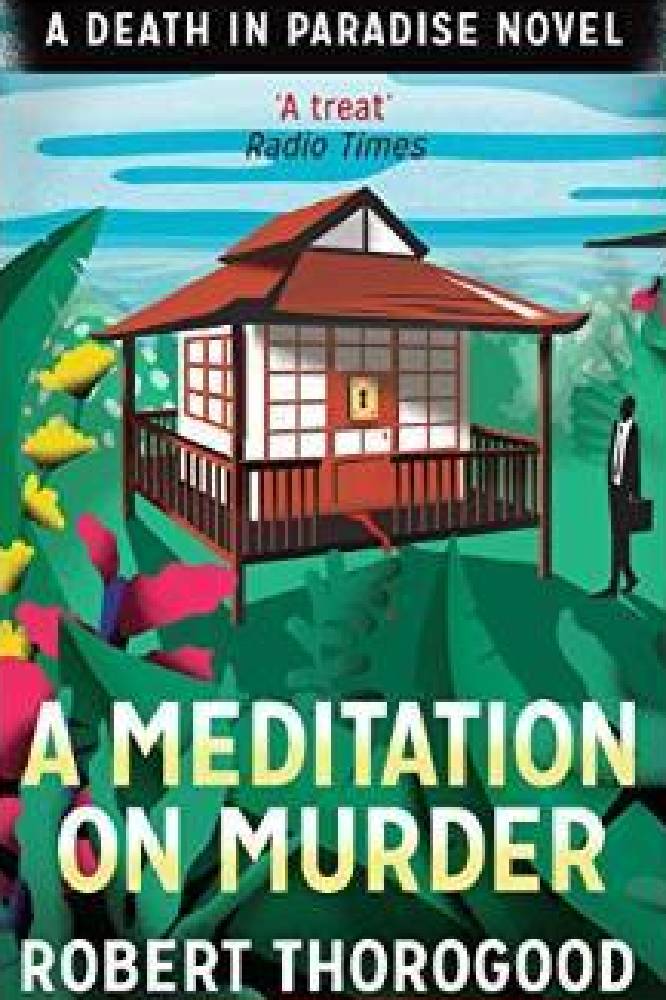2. A sidekick who makes our detective look amazing - just as Sherlock has Watson, Jonathan Creek has Maddie, Tuppence has Tommy, and Morse has Lewis. From a reader's point of view, we seem to take a (masochistic?) delight in having someone in the story who says the things we're thinking about the case and then gets slapped down by the genius Detective because their suggestions are 'too obvious'.
3. A fantastic world for the story. Great whodunnits take us into a very specific world - be it a country house, the Orient Express, or a small community in Dorset called Broadchurch. We can then really get to know how the place works, it's secrets - and, ideally, you get to discover specialist knowledge about that world that's intrinsically interesting. (I still have a working knowledge of the different soil types in New York from Jeffrey Deaver's The Bone Collector).
4. No DNA analysis! The advances in modern-day science labs are a nightmare if you're a writer trying to create a suspenseful whodunnit. After all, you don't want to go to all the trouble of having a killer carry out a fiendishly ingenious murder only for a crime lab to independently identify the killer through trace evidence left at the scene! This is why whodunnits are so often set in the past. Not because it's a nostalgic genre, but because the science labs were slower or non-existent then.
5. A great reveal of the killer at the end. This is perhaps the hardest part of any whoddunit to get right. The writer has to deliver a murderer at the end of the story who, on first appearance, is the last person you'd imagine could be the killer… and yet, when you think about it, you realise that it makes perfect sense that they're the killer. But when the writer gets it right ( The Murder of Roger Ackroyd, anyone?), the reader gets a thrill, I think, bigger than any other form of genre fiction can deliver.
6. Nothing is what it seems. A satisfying whodunnit should be a bit like a rollercoaster ride, and part of the joy of the journey (I think) happens when we discover that no-one and nothing is quite what we first thought it was: so, the priest turns out to be a gun-runner; a hardened criminal is revealed to be supporting an orphanage. And it's in the gap between what we thought at the beginning of the story and what we learn by the end where the fun happens. No-one is perfect; everyone is flawed; but who's the killer?!
7. A decent 'Eureka!' moment. I love it when our Detective is getting towards the end of the case and then hits a dead end to end all dead ends. There's no way anyone could solve the case now…and then our hero realises the significance of a tiny detail - for example, the dog that didn't bark in the night-time - and it's in solving this riddle that he or she is now able to make the whole cascade of dominos tumble and solve the case.8. Fair Play. I also think that when the Detective finally solves the case, he or she should do so using only information that the audience has been privy to. In other words, if the whodunnit's going to be satisfying, the writer has to play fair, and the reader / audience has to have exactly the same (theoretical) chance as our Hero of working out the identity of the killer.
9. Justice. In the world of the whodunnit, I think it's preferable that the killer is always caught. After all, the whodunnit genre is a bit of a parlour game, isn't it? We play along with the Detective trying to work out who the killer is, and that means, for it to be satisfying, we kind of need to 'get our man' at the end. In a whodunnit, unlike in real life, Justice should always be seen to be done.10. Joy. And finally, I think that a cracking whoddunit should be a joy to read. This doesn't mean that it can't be challenging - one of my all-time favourite books is Boris Starling's chilling Messiah - but I think that the great whodunnits are written by authors who know that they're entertainers performing a magic trick (the concealment of the true identity of the killer). They should take joy in how they deploy their red herrings, their misdirections and their bluffs, double bluffs and triple bluffs. Because, I think that if a whodunnit is written with real joy, then it's a real joy to read.


